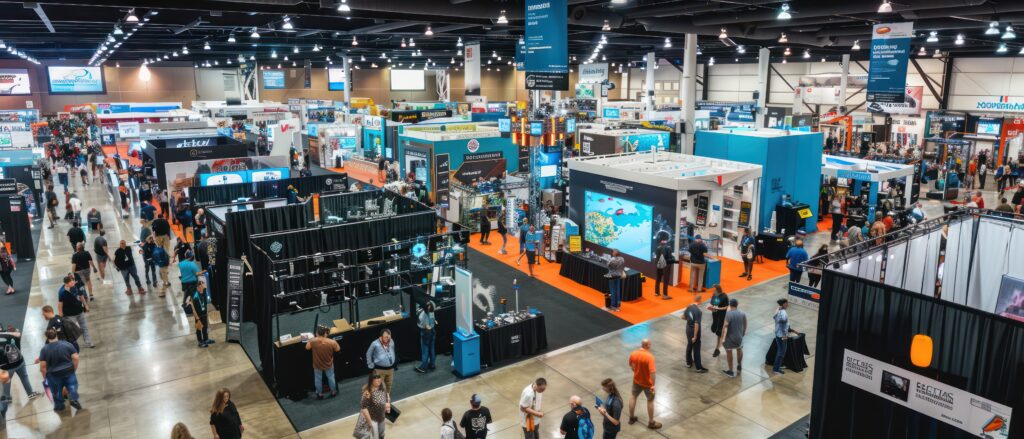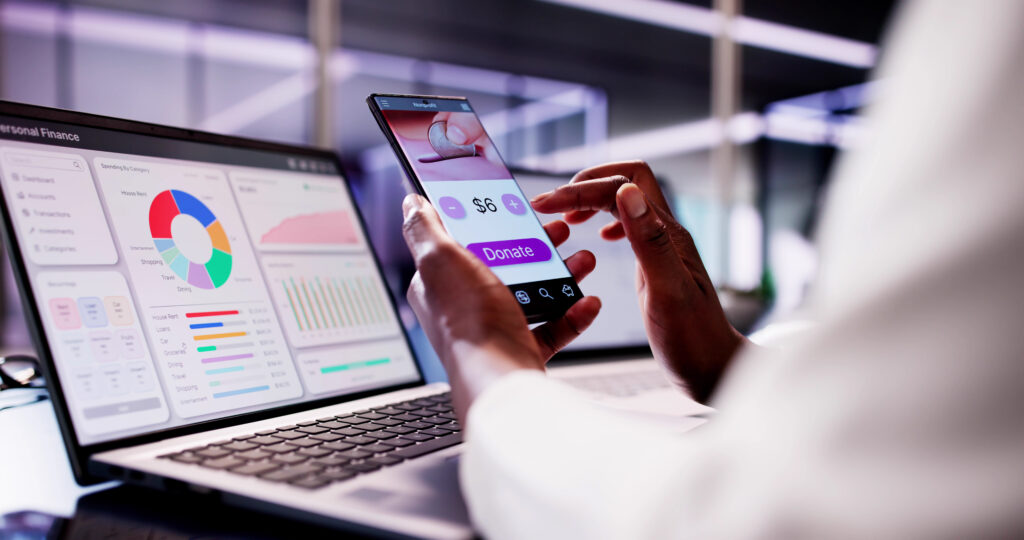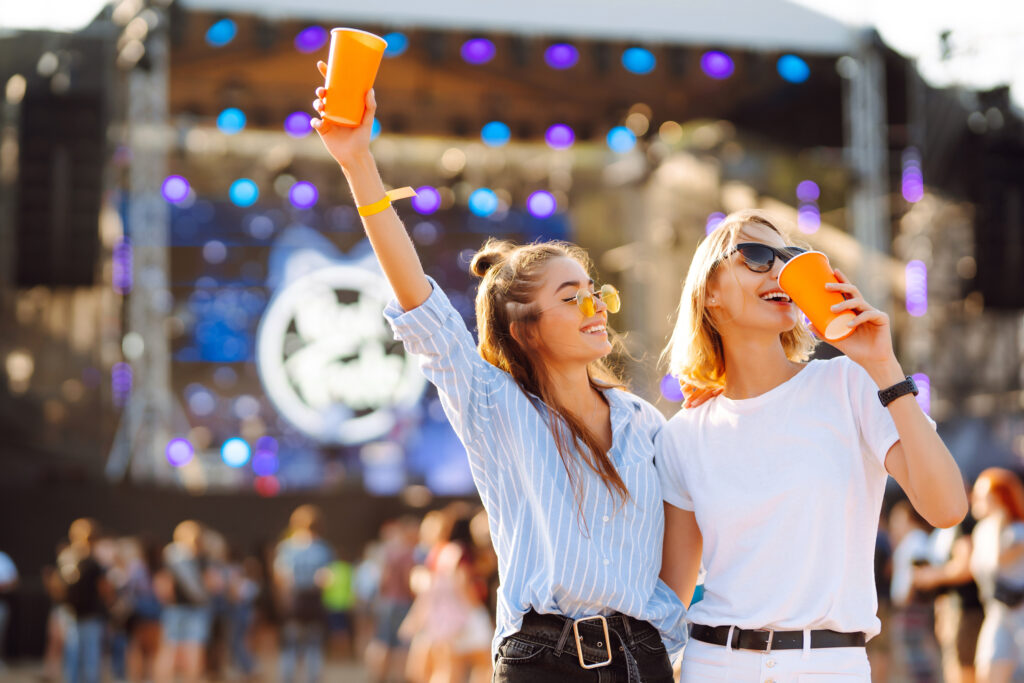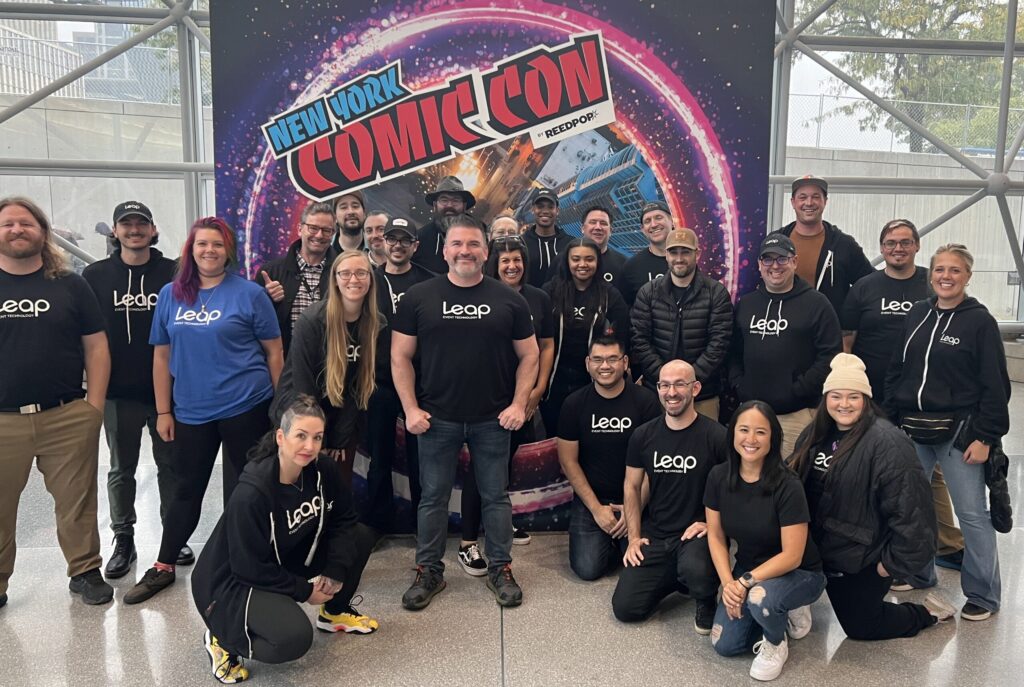How to Use Meta Ads to Sell More Tickets
Search Results
Looking to get your events in front of tons of new people? Try promoting on Facebook and Instagram! These are two of the largest social media platforms out there, making them powerful advertising tools for selling tickets to your upcoming events. Plus, with Meta as their parent company, it’s super easy to launch campaigns to Instagram and Facebook at the same time. In this article, we’ll walk you through the process of launching an ad campaign from start to finish, plus include some tips to optimize your ads and make them the best they can be!
Why You Should Use Instagram and Facebook Event Ads
Did you know that one third of the global population uses Facebook every month? That’s nearly three billion people! Similarly, roughly two billion people use Instagram each month, with the majority of its users being between the ages of 18 and 34. With this many people on these platforms, you’re bound to find your event’s target audience! Meta Ads will target people outside your network of followers and help you reach brand new audiences.
Another reason you should promote events on Facebook and Instagram is its budget control. Thanks to Meta Ads Manager, you’re able to easily create, adjust, and optimize your ad campaigns at any dollar amount. You can start with a low budget to test which ads are most effective, then spend more once you see which are converting the most people into ticket buyers. You also have a variety of ad formats at your disposal to best showcase your upcoming events. The secret lies in using the correct creative ads and the right settings to sell more tickets!
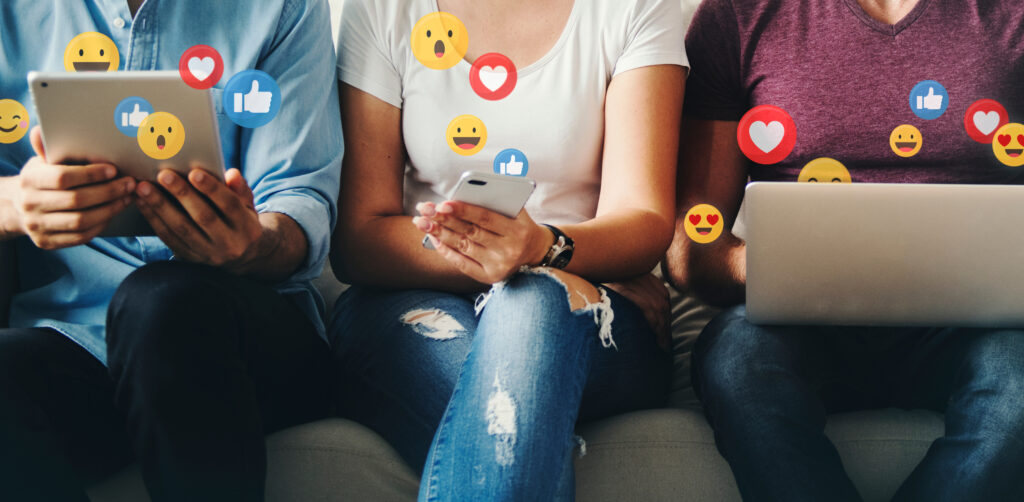
How To Set Up Instagram and Facebook Ads for Events
It’s time to build your first Meta ads campaign! Before we dive in, it’s important to know that Instagram and Facebook break their ads down into three subsequent groups: campaigns, ad sets, and ads. For example, one campaign may have two ad sets and each ad set has three ads in it, meaning there are six ads total in that campaign. As we’ll explain below, there are a few important steps that go into each layer before moving onto the next.
Step 1: Set Up Your Ads Manager Account
If you haven’t already, you’ll first need to create an account on business.facebook.com. To ensure your account is fully secure (especially since your financial information is involved), make sure to have two-factor authentication set up. Just in case anything happens to your account, you’ll also want to add at least one other trusted account to your page, and they should have two-factor authentication too.
Here are a few more action items you’ll need to complete before creating your first campaign:
- Connect or create your event’s Facebook page and Instagram account.
- Follow the instructions in Meta’s Events Manager and your website provider to verify your domain, create your datasets, and set up your Meta Pixel.
- Set up your payment method (Pro tip: use a credit card with strong cash back rewards so you can make the most of your ad spend).
Another thing, make sure you’re posting with some regularity to your Instagram and Facebook pages. This ensures your pages’ engagement stays up and makes them an effective host for your ads.
Step 2: Create a New Campaign
Once your account is all set, it’s time to create your campaign! First, give it an easily identifiable name, then select your campaign’s objective. Your marketing goals with these Meta ads will determine which objective you choose. To help with this, here is an example of when you may use each of these six objectives as an event organizer:
Awareness
You may use this objective to promote large brand sponsorships that your event has to drive more exposure and maximize reach for this partnership.
Traffic
Like the awareness objective, you could also use this objective to promote your event sponsorships and drive more people to your website.
Engagement
This objective may be used to encourage people to fill out a form to be entered into a raffle or giveaway related to your event.
Leads
Similar to the engagement campaign, this objective also works well when you’re trying to drive more sign ups to your forms, such as to be entered into a giveaway.
App Promotion
Does your event have a mobile app? Use this objective to encourage people to download the app to stay updated, as well as easily navigate your venue on event day.
Sales
This objective is best for whenever your marketing goals involve a transaction (e.g., ticket sales, merchandise, suite rentals). While the other objectives may drive more activity to your page, this one will focus on generating actual dollars. Consider toggling on the “Advantage Campaign Budget” setting for this objective, since it allows Meta ads to target and test a broader range of users to find your ideal audience!
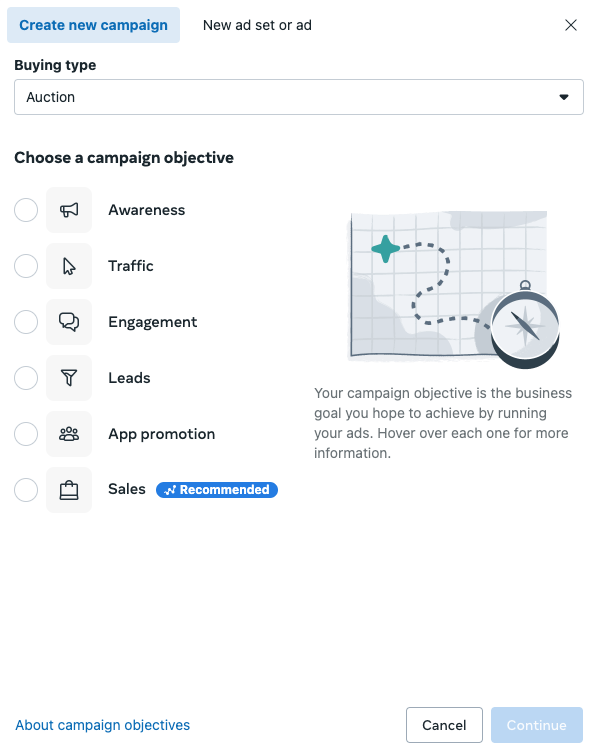
As you can see, different objectives can be used to help you attain the same marketing goals. That said, we want to emphasize here that there’s often no right or wrong answer to which you choose. It depends on your specific goals! When possible, we recommend you A/B test your ads with different objectives and see what produces the best results for you.
Step 3: Set Your Campaign’s Budget
Within the ad set level, you’ll also need to set your campaign’s daily budget. This depends on a number of factors including your target audience, geographic location, the duration of your ads, and the size of your budget. The more ads you use, the more you’ll spend.
The great thing about Instagram and Facebook ads for events is you can spend as much or as little as you’d like, anywhere from just a few dollars to thousands of dollars a day. If you have a tighter budget, the key is to focus your spend on a clearly defined target audience and on a handful of your strongest ads to maximize your budget.
Step 4: Put Together Your Campaign’s Ad Sets
Once you’re all set at the campaign level, it’s time to flesh out your settings in the ad set level. First, you’ll need to set up your conversions. This includes picking the conversion’s location (e.g., website, ticketing page), setting your performance goal, and checking that you’ve connected a Meta Pixel to that destination site. This can be done in the Meta Events Manager, which is linked to your main ads account. From here, you can add your various events and pixels for them to start tracking.
Next, you’ll need to select what kind of people to target with your Instagram and Facebook event ads. This is extremely important because, in order for your ads to be successful, you need to get them in front of the right group. Here, you’ll have the following three types of audiences to choose from:
Core Audiences
Target Facebook users based on age, gender, location, and interests. The key here is to add a few attributes, but not get too specific. It also depends on your budget, since larger audiences will cost more. Therefore, event organizers with limited budgets need to find a sweet spot between a large audience and a small one. Facebook has a gauge on how broad or narrow your audience is, so make sure you’re in the green and you’re good to go!
Lookalike Audiences
Use your Custom Audiences as a blueprint to build this unique audience. For instance, input data from last year’s attendees (like an email list), and Meta will use that to reach an audience of new people with similar traits and interests.
Custom Audiences
This option is perfect for remarketing especially. Reach people who have already expressed interest in your event through visits to your website, interactions with your app, subscriptions to your email list, or activity on your Facebook profile.
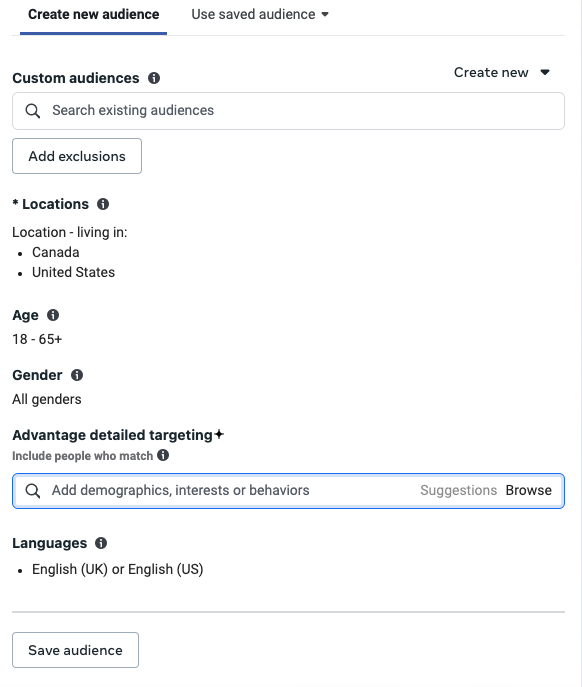
Step 5: Upload Your Ads
Now for the moment we’ve all been waiting for – time to upload your Meta ads! These ads can come in a variety of formats, with video being the most popular. You can also use images, story ads, carousels, shopping cart ads, and more. Your ad creative is the most important piece to the effectiveness of your campaigns, so we’ll dive deeper into this in a minute.
You’ll want to upload roughly three to five assets per ad set, ideally at least two images and two videos. Then, once you’ve uploaded your ads, congrats! You’re ready to publish your campaign!
Step 6: Monitor and Optimize Your Campaign Over Time
You aren’t done yet, though! Once your campaign is live, you’ll want to regularly check on your ad performance in Meta Ads Manager. Refrain from making any drastic changes until after you’ve given Meta some time to test your ads in their “Learning Phase” (which can take up to seven days). After that testing period is over, toggle off ads that aren’t generating you conversions and add more funds to the better performing ones.
Within the Breakdown feature of your Meta Ads Manager, the metrics you’ll want to analyze will depend on the objective of your campaign. For reach campaigns with the Awareness, Traffic, or Engagement objective, you’ll want to focus on the following metrics:
- Impressions: The total number of times each ad is displayed to users
- Clicks: Total number of clicks on your ad
- Click-Through Rate (CTR): The percentage of total clicks divided by the total number of impressions
- Cost Per Click (CPC): The average ad cost for each click
For conversion campaigns with the Sales or Leads objective, you should consider these metrics instead:
- Cost: The total amount of money spend on the ad
- Return on Ad Spend (ROAS): The money generated for your business from the ad
- Conversions: The total number of clicks that resulted in a desired action (e.g., ticket sales, purchases, sign ups)
- Cost Per Acquisition (CPA): The average cost for each conversion
Best Practices for Your Event Ads on Instagram and Facebook
For your campaigns to be successful, you have to have the right ads. However, at the end of the day, your ads will only be as effective as the content they’re promoting, so make sure you’re delivering the best event experiences possible!
When creating your ads, you can use platforms like Adobe Creative Cloud or Canva, as well as CapCut for your video ads. Here are a few tips on making the best possible Facebook and Instagram ads for events:
- Keep your ads short and sweet! Meta recommends your ads be 15 seconds long at most, especially since Instagram story ads tend to generate the most conversions.
- Explain your unique value proposition. Ensure your ad answers questions like, “What makes your event stand out from the crowd?” or “Why should people attend your event?”.
- Make your ads entertaining! Consider incorporating humor, using witty ad copy, or high-energy clips from your event to drive more engagement.
- Incorporate a compelling offer and a sense of urgency behind it, such as a limited time discount on tickets.
- Ensure your ad creative is uploaded at a high resolution, and not pixelated.
- Consider incorporating user generated content of your attendees or sharing testimonials of how much they enjoyed going to your previous event. This will create a more genuine connection with your target audience and make it easier for viewers to envision themselves going too!
- Include a clear and relevant call to action in your ad, such as visiting your website for more details or to buy tickets.
- Use your highest performing organic social media posts as ads! Since they’ve already proven to be effective, consider boosting them or uploading them as ads to drive more awareness to your events. Depending on your target demographic, viewers may also be more receptive to these types of boosted organic posts more than a more salesy ad.
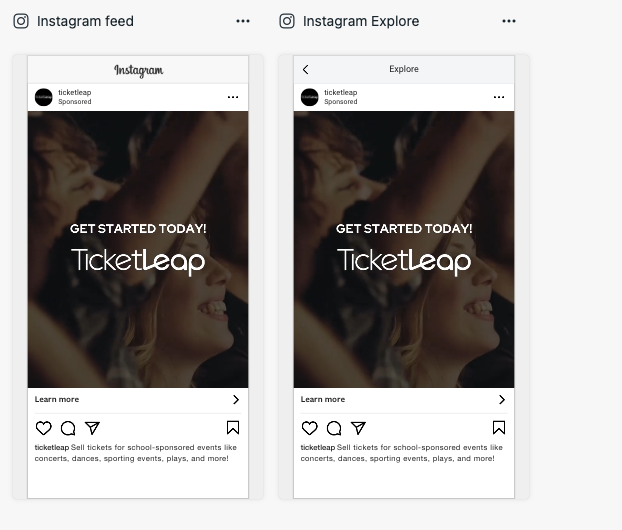
It’s Your Turn to Try Meta Ads!
There you have it! Now you’re ready to promote your upcoming events on Facebook and Instagram. By setting up a Meta Ads campaign, you can precisely target your audience, control your budget, analyze your campaign’s performance, and optimize your ad effectiveness. Ready to take your event promotion to the next level? Contact us to learn more about Leap’s marketing and analytics services, a dedicated team of event experts who can help you run successful digital ad campaigns for your events!

